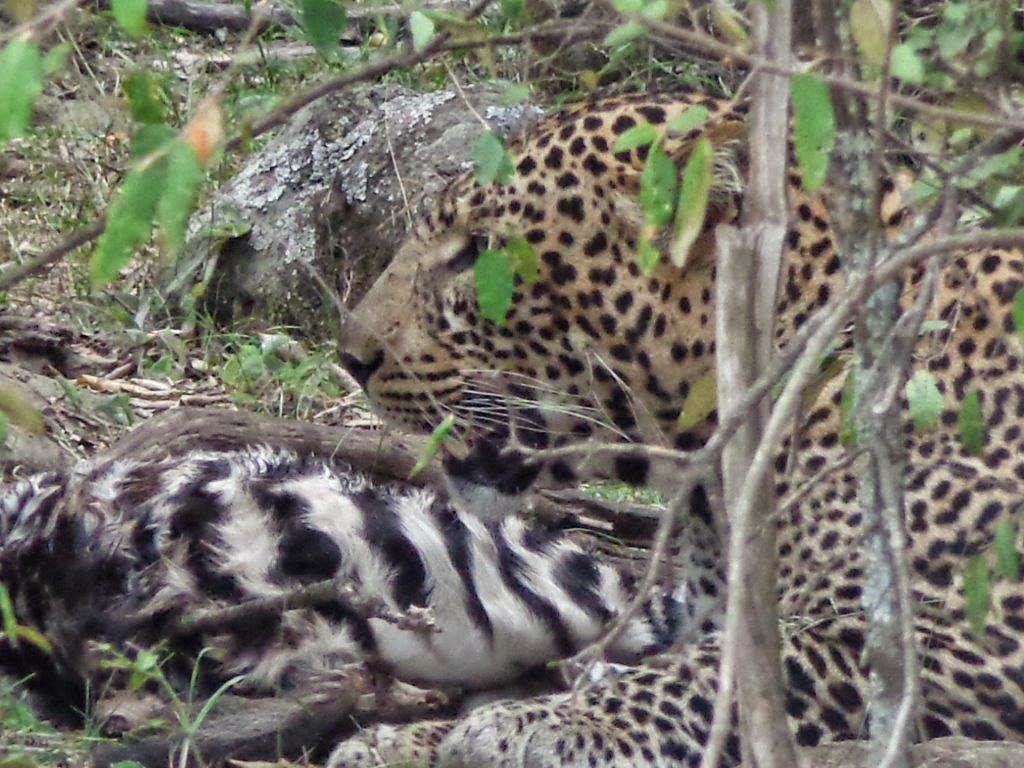A few days ago while on a game drive we saw hundreds of vultures relishing a freshly killed male impala. At first, I thought it was a leopard kill but there was no sign of the impala having been strangled by a leopard.
Vultures feed on carcasses, they do not make a kill of their own. We were very eager to find out who killed the impala. So we switched off the car engine and waited.
I only took three pictures then I saw a wolf-like animal emerging from the bush. It was a wild dog!
The impala had been hunted by a pack of wild dogs.
When we were children we were told that wild dogs only eat animals alive and when the animal falls down, the wild dogs leave it. I have also seen wild dogs hunting their own prey where they finish it immediately.
- African wild dogs live in packs. The Alpha male leads the team in a hunt.
- African wild dogs take care of the young for about 12 -14 months –or for as little as six months if all of the previous young die.
- The gestation period is between 60 and 80 days. Pups are born in dens.
- A wild dog is adapted to long-distance running at high speeds, of up to 66 km/hr for 10 to 60 minutes, and over great distances (at about 50km/hr. for 5.6km). Nearly 80 per cent of all wild dogs hunts end in a kill.
- Members of a pack vocalize to help coordinate their movements.
- They take good care of their young. After a successful hunt, the hunters will regurgitate meat for those that remained at the den.
- To hunt larger prey, wild dogs use a closely coordinated attack, beginning with a rapid charge to stampede the herd. One wild dog then grabs the victim's tail, while another will latch on to the upper lip or nose, and the remainder attempt to disembowel the animal.
- The male wild dogs usually perform the task of grabbing the prey by the nose.
- The African wild dog is an endangered species due to habitat loss and poaching. It uses very large territories (so can persist only in large wildlife protected areas), and it is strongly affected by competition with larger carnivores that rely on the same prey base, particularly the lions and hyenas.
Report by Steve Tilas – Safari Guides, Samburu Intrepids Camp.
©Heritage Hotels Ltd, Kenya. http://www.heritage-eastafrica.com/
























